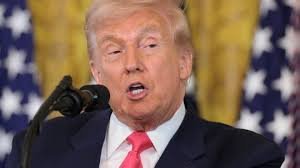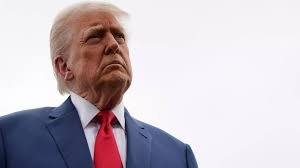
The $2,000 Tariff Stimulus Check: Dream or Reality for Americans?
The notion of a new round of direct payments has captured national attention, but this time with a twist. Former President Donald Trump has proposed sending “tariff dividend checks” of $2,000 to eligible Americans, funded by revenue from import tariffs. While the idea of a significant financial boost is appealing, deep skepticism abounds regarding its feasibility, from market oddsmakers to fiscal policy experts. Could this be a genuine economic relief plan, or is it simply political rhetoric?
Trump’s Bold Proposal: What’s on the Table?
On November 9th, via Truth Social, Donald Trump floated the possibility of a “dividend of at least $2,000 a person (not including high income people!)” paid to Americans. Days later, his White House press secretary, Karoline Leavitt, publicly endorsed the initiative, stating that “The White House is committed to making that happen, yes, and we are currently exploring all legal options to get that done.” Trump clarified that these $2,000 payments would target “low and middle income USA Citizens,” positioning them as a rebate derived from tariff revenue.
This isn’t the first time Trump has considered direct payments. Earlier suggestions, such as stimulus checks funded by savings from the Department of Government Efficiency (DOGE), never materialized, fostering a sense of caution among taxpayers.
Prediction Markets Weigh In: High Hopes, Low Odds
For those looking for an impartial forecast, prediction betting sites offer a fascinating barometer of public and investor sentiment. Platforms like Polymarket and Kalshi indicate a strong wave of doubt surrounding these potential tariff dividend checks:
- Polymarket: As of mid-November, the likelihood of President Trump establishing a tariff dividend in 2025 hovered around a mere 7%, despite significant trading volume. A separate wager for a dividend by March 31, 2026, saw odds peaking at 44% but later falling to 26%.
- Kalshi: Similarly, users on Kalshi assigned only a 5% chance of these checks materializing in 2025, mirroring the widespread skepticism.
These low probabilities underscore a broad perception that the path to these checks is fraught with obstacles.
The Financial Equation: Is There Enough Tariff Revenue?
A crucial question revolves around the actual revenue generated by tariffs. For $2,000 checks to be distributed widely, a substantial financial reservoir would be needed. However, expert analyses paint a challenging picture:
- The Committee for a Responsible Federal Budget, a nonpartisan nonprofit, estimates tariff revenue at approximately $100 billion to date. This figure falls considerably short of the estimated $600 billion that would be required for an initial round of $2,000 checks.
- The Tax Foundation, another respected think tank, projects net revenue from Trump’s tariffs to reach around $216 billion in fiscal year 2026. While significant, this is still far below the sum needed for universal $2,000 payouts and simultaneously paying down national debt, as Trump has also suggested.
The gap between projected tariff revenue and the funds needed for these payouts, combined with the goal of reducing national debt, creates a significant financial hurdle for the tariff stimulus plan.
Legal Hurdles: The Supreme Court’s Shadow
Beyond the economic logistics, the legal framework for implementing such a policy presents its own set of challenges. The Supreme Court recently heard arguments concerning whether a president has the unilateral power to impose widespread tariffs or if such authority rests solely with Congress. Skepticism from a majority of justices during these hearings suggests a difficult road ahead for executive-led tariff initiatives.
On prediction markets like Kalshi, the likelihood of the Supreme Court ruling in favor of Trump’s expansive tariff powers has fallen significantly, indicating that the legal challenge is viewed as a substantial impediment to the tariff dividend concept.
Expert Outlook: A “Workable Way” Remains Elusive
Geopolitical futurist Scott Steinberg, a keynote speaker for FutureProof Strategies, highlighted the practical difficulties. “It’s hard to see how the administration would be able to make the math work in practice without putting more parameters on the checks,” Steinberg told USA TODAY. He questioned how such a “windfall for private citizens” would leave enough revenue to also pay down national debt, as the plan is currently envisioned.
While acknowledging the public’s desire for financial relief, especially during challenging economic times, Steinberg concluded, “Still, it’s difficult to tell at this point if there’s a workable way to execute on the concept, especially as initially sketched out – and if we’ll really seen a tangible return in our wallets on overarching policy decisions.”
The Verdict on Tariff Stimulus Checks: A Long Shot?
The proposal for $2,000 tariff stimulus checks has sparked hope, but the data from prediction markets, the financial realities of tariff revenue, the legal questions surrounding presidential power, and expert analyses all point towards a highly challenging implementation. While the desire for economic relief is clear, the path for these specific government payments appears to be a long shot at best.
Only time will tell if this ambitious proposal can navigate the complex political, economic, and legal landscape to become a reality for American wallets.




